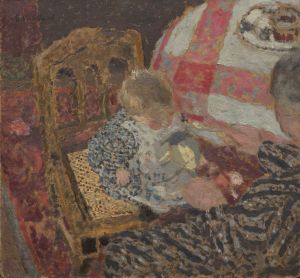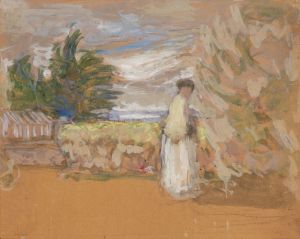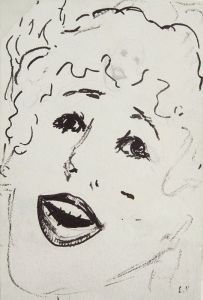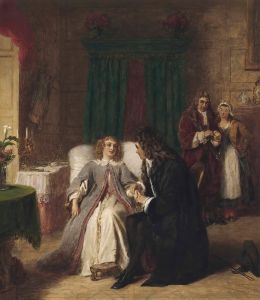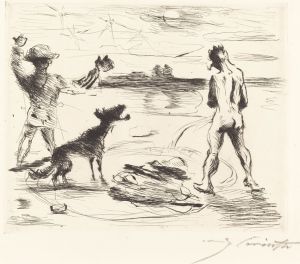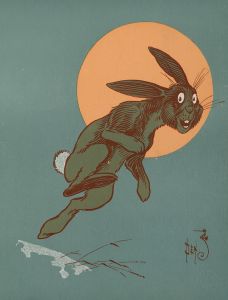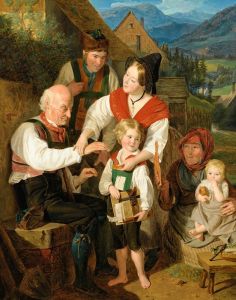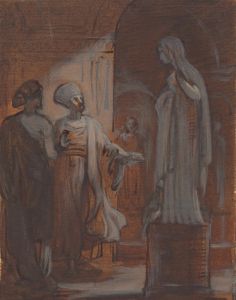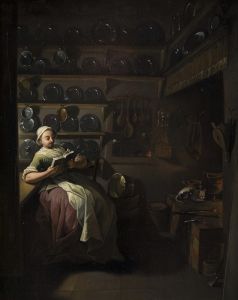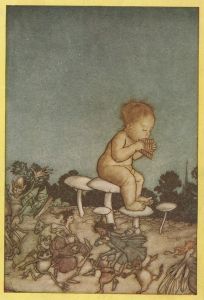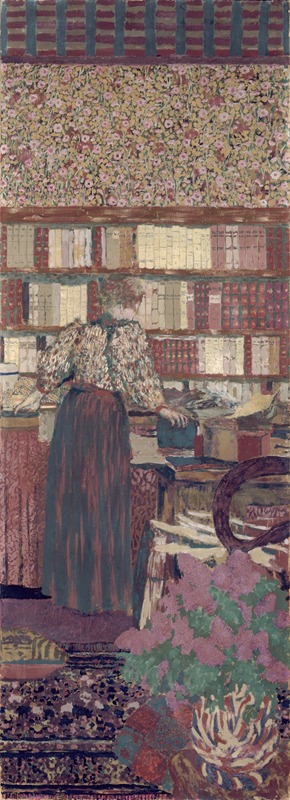
Personnages dans un intérieur. Le choix des livres
A hand-painted replica of Édouard Vuillard’s masterpiece Personnages dans un intérieur. Le choix des livres, meticulously crafted by professional artists to capture the true essence of the original. Each piece is created with museum-quality canvas and rare mineral pigments, carefully painted by experienced artists with delicate brushstrokes and rich, layered colors to perfectly recreate the texture of the original artwork. Unlike machine-printed reproductions, this hand-painted version brings the painting to life, infused with the artist’s emotions and skill in every stroke. Whether for personal collection or home decoration, it instantly elevates the artistic atmosphere of any space.
Édouard Vuillard, a prominent French painter associated with the Nabi movement, created the painting "Personnages dans un intérieur. Le choix des livres" around 1896. This work exemplifies Vuillard's distinctive style, characterized by intimate domestic scenes and a subtle interplay of patterns and colors. The painting is a testament to Vuillard's ability to capture the quiet, everyday moments of bourgeois life in late 19th-century France.
Vuillard was known for his keen observation of domestic interiors, often depicting his family and friends in their homes. "Personnages dans un intérieur. Le choix des livres" translates to "Figures in an Interior. The Choice of Books," suggesting a scene where individuals are engaged in selecting or discussing books. This theme reflects Vuillard's interest in the intellectual and cultural pursuits of his time, as well as his appreciation for the quietude and introspection associated with reading.
The painting is notable for its composition and use of color. Vuillard often employed a muted palette, focusing on the harmony of colors and the intricate patterns found in wallpapers, fabrics, and furnishings. This approach creates a sense of unity and intimacy within the scene, drawing the viewer into the private world of the subjects. The figures in the painting are typically rendered with soft, indistinct outlines, blending into their surroundings and emphasizing the overall atmosphere rather than individual identities.
Vuillard's technique involved the use of distemper, a type of paint made by mixing pigments with a binding agent such as glue. This medium allowed him to achieve a matte finish and subtle gradations of color, enhancing the quiet, contemplative mood of his interiors. The artist's attention to detail and texture is evident in the depiction of various surfaces, from the patterns on the walls to the textures of clothing and upholstery.
The painting is part of Vuillard's broader body of work that explores the themes of domesticity and the interplay between people and their environments. His interiors often convey a sense of stillness and introspection, inviting viewers to reflect on the nuances of everyday life. Vuillard's work is also marked by a strong sense of composition, with careful attention to the arrangement of elements within the frame.
"Personnages dans un intérieur. Le choix des livres" is an example of Vuillard's contribution to the Nabi movement, which sought to break away from traditional academic art and explore new forms of expression. The Nabis, including artists like Pierre Bonnard and Maurice Denis, were influenced by Symbolism and Post-Impressionism, and they emphasized the importance of personal vision and the decorative aspects of painting.
Vuillard's work, including this painting, has been celebrated for its ability to capture the essence of domestic life with sensitivity and nuance. His interiors are not just depictions of physical spaces but are imbued with a sense of atmosphere and emotion, reflecting the artist's deep engagement with his subjects and their environments.
Today, Vuillard's paintings are held in high regard and can be found in major museums and collections worldwide. "Personnages dans un intérieur. Le choix des livres" remains a significant example of his artistry, showcasing his unique approach to capturing the quiet beauty of everyday life.





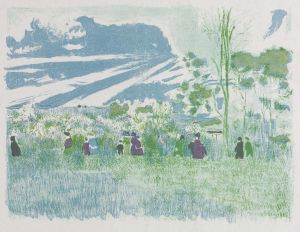
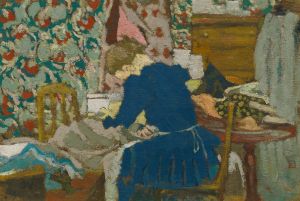
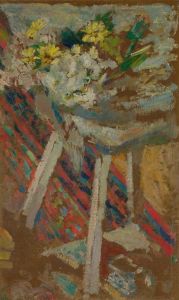
![Nature morte au bougeoir [The Candlestick]](/imgs/216620/s/edouard-vuillard-nature-morte-au-bougeoir-the-candlestick-5fbea233.jpg)
